Text
I READ A BOOK: “Survive The Night” by Riley Sager
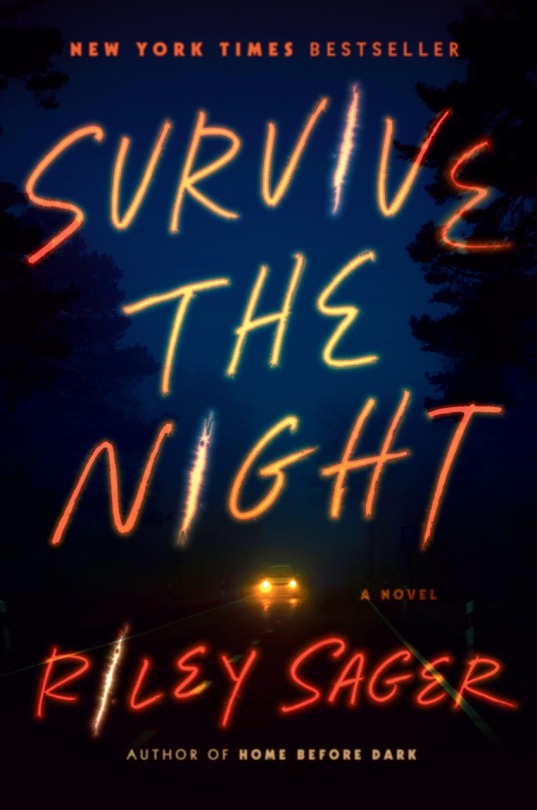
It is getting to the point where I know it is officially summer when a new Riley Sager book is released. Sager’s thrillers have been a staple of my summer beach reading, from his first novel, The Final Girls, published in 2017. His new novel Survive The Night is just like the others: violent, fast-paced, and full of exciting twists.
Survive The Night follows Charlie Jordan, a guilt-ridden movie buff whose college roommate Maddy is just the latest victim of the Campus Killer. Having been the last person to see Maddy the night of her death, and overcome with the guilt of not saving her, Charlie requests a ride off campus, finding it in fellow student Josh. However, on their late-night ride together, Charlie starts to suspect that Josh may have sinister motives for luring her into his vehicle. Is her paranoia justified, given her gruesome circumstances? Or is her mind playing tricks on her in the dark?
While Riley Sager is not my all-time favorite author and I wouldn't consider his novels to be the best out there, Sager's work is consistently thrilling, keeping me guessing from beginning to end. I like how Sager tried something different with Survive The Night, keeping the action contained to only one long night and most of it to the interior of Josh's car. Setting the story in 1991 also keeps the action believable, with Charlie having to rely on pay phones and the kindness of strangers in her attempts to stay alive. There were gimmicks that Sager used that could be grating (Charlie is a fan of classic movies, so each chapter begins like a screenplay setting the scene) but they never felt out of place or forced.
Given my enjoyment of Sager's previous works, I was not surprised to find myself hooked to Survive The Night or that I was able to finish it over one weekend. Anyone looking for a perfect beach read should look no further than the latest Riley Sager thriller.
0 notes
Text
I READ A BOOK: “The Big Goodbye: Chinatown and the Last Years of Hollywood”

Despite being a self-proclaimed cinephile, I hate to admit I am not well-versed on the classic film Chinatown. I am familiar with all the references, including the iconic final line of dialogue, yet I don’t think I have ever sat down and really watched the film from beginning to end. Feeling that now is as good a time as ever, and also being a fan of author Sam Wasson’s work, I sat down with the new book about the making of the film, The Big Goodbye: Chinatown and the Last Years of Hollywood.
The Big Goodbye tells the story of Chinatown through four of the creative minds behind it: producer Robert Evans, screenwriter Robert Towne, director Roman Polanski, and star Jack Nicholson. At the time pre-production of Chinatown began, Polanski was still recovering from the brutal slaying of his wife, Sharon Tate, and unborn child by the Manson family. Nicholson, quickly reaching legendary status, was looking for the next great movie role. Evans, a successful producer at Paramount Pictures, initially hired Towne to adapt The Great Gatsby, but Towne instead convinced Evans to let him write his own screenplay, a noirish mystery set in 1930s Los Angeles. The four men, their backgrounds and experiences combined, worked to create a cinematic masterpiece, whose screenplay has been hailed as one of the best of all time.
While the book primarily described the making of Chinatown, Wasson’s The Big Goodbye also tells the story of Hollywood in the mid-1970s. The Manson murders effectively killed the 60s, as well as any innocence Hollywood had left, and Chinatown embraces the cynicism and gloom that permeated the city. After the film’s release, only Nicholson’s career seemed to improve, with Evans stepping down from Paramount, Towne battling with drug addiction and divorce, and Polanski infamously raping a minor and fleeing to Europe, never to return to the United States again. Reading The Big Goodbye gives me a greater appreciation for Chinatown, and I hope to revisit it soon.
2 notes
·
View notes
Text
I READ A BOOK: “The Other Black Girl” by Zakiya Dalila Harris
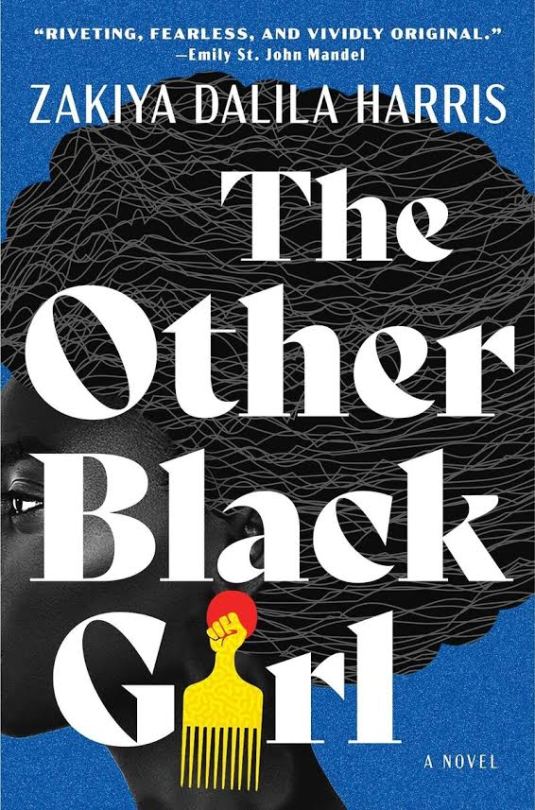
Sometimes you find a book that is difficult to describe because you’ve never read a book like it before. Zakiya Dalila Harris’s new novel The Other Black Girl is that type of book for me. Part social commentary, part satire of the publishing world, and part government conspiracy, The Other Black Girl was a book that frequently made me stop and ask “Wait, what just happened?”
Nella Rogers is an assistant and the only black staff member at Wagner Books. Trying to get ahead in the business, Nella doesn’t ruffle any feathers, politely nodding and agreeing with her “woke” white coworkers. One day, Wagner hires Hazel-May McCall, another woman of color, and Nella is thrilled to finally have someone at work who understands both her references and grievances. Although Hazel seems to be an ally, Nella is quickly caught off guard by how welcomed her new coworker is, quickly rising in the ranks and scoring opportunities Nella had never been offered in her two years of employment. To top it off, Nella discovers a note left on her desk which reads “LEAVE WAGNER. NOW.” Did Hazel leave it, trying to scare off any competition? Or is someone trying to warn Nella of something more sinister?
The Other Black Girl hints at a conspiracy of women of color being forced to either lose their black identity or lose their jobs. While Nella is trying to navigate the confusing hurdles at work, a secret society is trying to reach out to Nella, warning her that Hazel is not who she says she is. The outcome of all this was incredibly outrageous, bizarre, and a little depressing, but that does not diminish the energy Harris was able to bring to her first novel. Harris, who also worked at a publishing company before leaving to write this book, brings clear insight to the publishing setting; it is easy to imagine that the patronizing that Nella faces in the workplace is based on actual experience. The ending is somewhat confusing and I am not sure what message Harris is trying to make, but I was engrossed in The Other Black Girl from beginning to end and it left me wanting more.
1 note
·
View note
Text
I SAW A MOVIE: “Zola”

One of the last films I saw before cinemas were shut down last year was the horror movie The Lodge. The movie had its issues, but one thing I couldn't deny was that Riley Keough's lead performance was astounding and fearless. As luck would have it, my first movie at the recently reopened Waters Edge Cinema is another Riley Keough film - Zola - this one featuring an entirely different yet equally as fearless performance.
Zola is based on a series of tweets that went viral back in 2015 - an unlikely source for a movie adaptation, I know. While waitressing, part-time stripper Aziah "Zola" King meets Stefani, a fellow exotic dancer. After a night making money in the clubs, Stefani invites Zola on a road trip to Tampa, promising more money than she's ever made before, and the two women join Stefani's boyfriend Derrick and "roommate" X. Events quickly spiral out of control when Zola discovers that Stefani and X have more than dancing planned for the weekend.
Directed by Janicza Bravo, Zola is sheer, dirty madness. As Zola, Taylour Paige is beautiful and confident, not afraid to stand up to her ridiculous situation but smart enough not to ruffle the wrong feathers. Riley Keough channels trashiness, donning blackface without the actual black face, as the untrustworthy Stefani. Colmon Domingo, quickly becoming a familiar face after supporting roles in Ma Rainey's Black Bottom and If Beale Street Could Talk, is a scene-stealer as the mysterious X, a character full of conundrums and surprises right up until the end of the film.
The look of the film feels similar to 2019's Hustlers: very flashy, trashy, and stranger than fiction. Zola never makes the characters' predicament seem glamorous, refusing to shy away from some of the more gratuitous and uglier images. The music by Mica Levi (who also composed one of my favorite film scores, that of the film Jackie) establishes the uncomfortable tone of the film, layering innocent-sounding chimes and bells with unsettling drones. My only complaints for the movie would be some confusing visual motifs and an ending that seems to peter out, rather than come to any satisfying conclusion.
I couldn't ask for a better movie to enjoy back in my home cinema than Zola. The movie was wild, unpredictable, and hilarious, telling an outrageous story at a breakneck pace. Paige gives a star-making performance as the titular Zola, leading the audience into her unbelievable experience, but it is Keough's performance that will be talked about long after the movie is over.
2 notes
·
View notes
Text
I READ A BOOK: “The Plague Year” by Lawrence Wright

This may come as a shock to absolutely no one, but 2020 is probably going to be best known for one thing and one thing only: COVID-19. So it was inevitable that the first book I read that detailed our last year would feature the pandemic at its forefront.
Lawrence Wright's The Plague Year: America in the Time of COVID takes a deep dive into the year that was, starting in Wuhan as the Chinese government tries desperately to hide the truth and ending in January 2021 as Trump supporters stormed the Capitol. Along the way, Wright shows how seemingly unrelated news events - such as the murder of George Floyd in Minneapolis - could actually be connected to the pandemic, putting people into situations they previously would not have been in had life continued as normal. Wright also includes personal anecdotes, from watching the director of the play he wrote come down with COVID-19 to his own frustrating attempts to obtain the vaccine.
While not the most lighthearted of reading material, I was surprised by how readable and well-paced The Plague Year was. Wright packs in a lot of information, which is easy to do since so much happened in the past year and a half. Working in healthcare myself, it is somehow easy to forget how bleak things felt last spring and how strangely normal they feel now. Wright puts things into perspective, not letting the reader forget the sacrifices that were made or the lives that were lost.
0 notes
Text
I READ A BOOK: “To Be A Man” by Nicole Krauss

Even though my regular reading material is made up of novels or non-fiction books, I do enjoy finding a book of short stories to pour into from time to time. Nicole Krauss's book of stories, To Be a Man, came highly recommended and, despite not knowing much about Krauss as a writer, I decided to check it out.
To Be a Man features ten short stories, mostly small in scale but bursting with energy and emotions. In "End Days," Noa assists in delivering bouquets of flowers to a wedding while both forest fires and her parents' divorce loom on the horizon. In "Switzerland," the protagonist looks back thirty years to her friend Soraya, who began an affair with an older banker and went missing. "Seeing Ershadi" follows a dancer who believes she spots her favorite actor Homayoun Ershadi while traveling in Tokyo. The stories are well-written and full of mystery, featuring Krauss's own Jewish heritage and a myriad of complex characters and questions. The main character in "Zusya On The Roof," a Hebraic studies professor, goes through a crisis of faith following both a near-death experience and the birth of a new grandson, while the two main characters in "Future Emergencies" find themselves remaining not only calm but aroused as they follow unsettling news propelling much of society to stockpile canned goods and gas masks.
My main complaint with To Be a Man (a complaint I sometimes have with short story collections) is that not every story feels complete, with many of the stories feeling like rough drafts of potentially longer stories or novels. Regardless, Krauss's words are unsettling, thought-provoking, and powerful, bringing to life an assortment of personalities and ideas.
0 notes
Text
I READ A BOOK: “So You’ve Been Publicly Shamed” by Jon Ronson
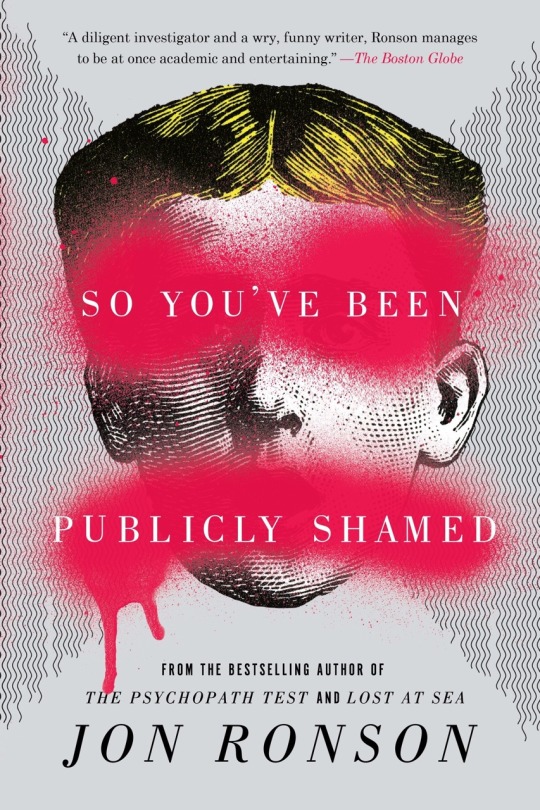
The Internet can be a cruel place. Look up any comments section on YouTube or Reddit and you'll find arguments, insults, and even threats. A lot of this has to do with the anonymity of the Internet: if the person you are insulting doesn't know who you are, then there is no fear of being caught or reprimanded. It also just as easy to see the person the internet is shaming as not real, because there is no emotional attachment involved and therefore not guilt when shaming gets out of control. Think about all of the people the Internet has latched onto with its hatred, demanding they be fired from their job for an inappropriate tweet. What was the follow-up? Jon Ronson's nonfiction book So You've Been Publicly Shamed takes a look into this very modern and terrifying phenomenon.
So You've Been Publicly Shamed follows a few notable examples, although Ronson could have easily found enough examples to double the length of his book. The most infamous example featured in the book has to be Justine Sacco, who, before leaving for a flight to South Africa, tweeted, "Going to Africa. Hope I don't get AIDS. Just kidding - I'm white!" By the time her 11-hour flight was over, her tweet had gone viral and she had lost her job. While the Internet worked together like a mob to punish this woman they had never and probably would never meet, Ronson clearly shows that the fallout from a public shaming like Sacco's is much more destructive and devastating than people realize. Other shamed individuals featured in Ronson's book found themselves going about their daily lives one minute, and then with just a status update or uploaded photo, their lives are changed forever.
One point that Ronson makes in So You've Been Publicly Shamed is that people tend to conflate feeling offended with feeling emotionally affected. Someone's racist or sexist tweet might offend you, but unless it is a direct attack, it is typically not going to significantly ruin your day. There is something about the Internet that causes people to be offended more easily, but that feeling of offense typically doesn't last very long. Is anyone still offended about those Dr. Seuss books being discontinued a few months ago? However, enough people reach out to that same person's workplace to demand their firing, or enough people spam the person with threats and violent words, and that can really change a person into a shell of their former self. Justine Sacco had family members distance themselves from her and she suffered from depression and PTSD. Other people featured in Ronson's book experienced similar changes, which made them afraid to post anything online ever again.
Reading So You've Been Publicly Shamed coincided with a personal realization that I've become too reliant on social media to soothe my boredom. Oftentimes, without even thinking about it, I'll scroll through Reddit or Facebook without actually absorbing any of the information I'm viewing, so I've purposely put my social media apps in another folder to hopefully prevent myself from habitually seeking them out. So You've Been Publicly Shamed really puts into perspective how toxic the Internet can be. It's not always this way. The Internet can bring people together, but it can also bring people together in a collective effort to bring someone else down. With the rise of cancel culture and with online shaming being more harmful than ever before, So You've Been Publicly Shamed almost makes you want to avoid the Internet forever.
0 notes
Text
I READ A BOOK: “The Last Thing He Told Me” by Laura Dave
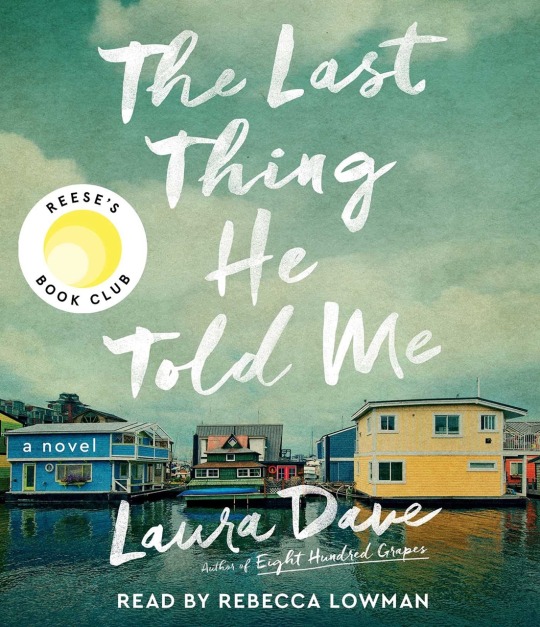
Married only a year, Hannah Michaels is surprised to wake up one morning and learn that her husband Owen has disappeared, leaving his teenaged daughter Bailey in her responsibility. Bailey is left with a duffel bag full of cash, while Hannah is left with a note that simple says "Protect her." Both are left with more questions than answers. Although Hannah's relationship with Bailey is not exactly rosy, the teenager naturally resenting her new stepmother's presence in her life, the two set out to solve the mystery of Owen's whereabouts.
Laura Dave's new mystery The Last Thing He Told Me was a decent summer read, deliciously paced and a perfect book to bring to the beach. I found myself surprised with how quickly I was moving through the novel, the story never once dragging. Dave keeps Hannah and Bailey's investigation small-scale and believable, although sometimes things wrap up a little too neatly. Dave knows just how and when to reveal information so it leaves the reader wanting more, with Owen's nefarious backstory hinted at during a series of flashbacks. The book did end a little anticlimactically, with Hannah and Bailey's lives seemingly unchanged despite a series of massive life events, and a subplot involving a mob lawyer feels rushed. Nonetheless, The Last Thing He Told Me was an ideal book with which to begin the summer reading season.
0 notes
Text
I READ A BOOK: “DisneyWar” by James B. Stewart
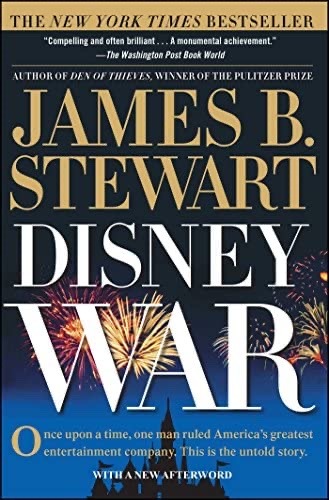
One of my favorite podcasts is Podcast: The Ride, a podcast featuring three comedians as they nerd about about theme parks and attractions. I have a deep love for all things Walt Disney World, especially the history of the parks, so the podcast is a natural fit for me. Frequently on the show, they mention a nonfiction book about the Disney corporation, specifically its former CEO Michael Eisner, titled DisneyWar. Loving the idea of a behind-the-scenes look at one of the most powerful companies in America, I quickly sought out the book.
DisneyWar, written by James B. Stewart, is an exhaustive look at Eisner's tenure, ranging from 1984, when he left Paramount Pictures, to 2005, when he was ousted from his CEO position at Disney. Eisner was a divisive figure. Clearly hoping to replace Walt Disney as the new face of the company, Eisner started hosting The Wonderful World of Disney, and he also took charge of many of Disney's successes, including Who Framed Roger Rabbit and Beauty and the Beast. However, he was also responsible for many of its failures, including the expensive Disneyland Paris and Disney's California Adventure. For every successful movie or venture, he was behind a failure or missed opportunity; he turned down Harvey Weinstein's plea to back The Lord of the Rings trilogy, believing there wasn't an audience for fantasy films, and he turned down shows like Survivor and CSI, which later became hits on other networks. Most importantly, Eisner clashed with coworkers, which led to infamously heated firings and court cases with the likes of Jeffrey Katzenberg, who later cofounded Disney rival DreamWorks SKG, and Michael Ovitz.
Stewart's book is intensely researched, looking at every project and deal overseen by Eisner during his two-decade tenure as CEO. The first half of Eisner's time at Disney was its most productive, with Eisner showing his strengths by spearheading hit projects and nurturing talent like Howard Ashman, but it came to an end with Disney president Frank Well's untimely death in a helicopter crash. After Well's passing, it feels like Eisner is barely hanging onto his authority at Disney, along with his sanity. A Machiavellian leader prone to temper tantrums, it is clear from the beginning that Eisner is a born businessman, even though he lacked the ability to sit back and let others do the jobs they were hired to do without him getting in their way.
At over 500 pages, DisneyWar took some time to get through, yet I was never bored reading it. While Stewart could have easily condensed his information and deleted a movie project or two (did I really need to know so much about the politics behind Lizzie Maguire?), his research only highlights just how much the Disney corporation has been able to accomplish over the years. Without Eisner bringing Disney out of the lackluster 70s and 80s, it is entirely possible that the company would never have acquired the rights to Marvel or Star Wars. A physically hefty yet endlessly fascinating read, DisneyWar was the perfect book for a Disney freak like me.
0 notes
Text
I SAW A MOVIE: “A Quiet Place Part II”

Back in early March 2020, John Krasinski's A Quiet Place Part II had its Hollywood premiere. It was set to open in theaters a few weeks later when the pandemic hit, closing theaters and postponing the movie indefinitely. Almost fifteen months later, the movie has officially opened, and along with it, strangely enough, life seems to be getting back to normal.
Aside from an intense flashback scene showing the initial alien invasion and attack, A Quiet Place Part II picks up immediately after the events of the first movie. The Abbott family, having just lost patriarch Lee and discovering that the monsters are weakened by high-pitched frequencies, set out to find other survivors. They encounter Emmett, a family friend who has lost his family to the monsters, and they also hear a radio broadcast promising refuge somewhere out at sea. Regan, deaf but determined to avenge her father's death, goes off on her own to find the island, although she is soon joined by Emmett, who agrees to help her find her destination. Meanwhile, mother Evelyn attempts to soothe her son Marcus's worries while also raising her newborn child.
Whereas the first movie followed only the Abbott family, not really straying too far outside of their family farm, A Quiet Place Part II does suffer from an abundance of new locations and characters. Emmett, played by the always reliable Cillian Murphy, is a good addition, and his character, despite being new to the franchise, has a familiar quality to him, like he has been close to this family for years. A scary gang that attacks Emmett and Regan, however, feel completely random and shoehorned into the narrative; the fact that none of the characters are able to speak also makes their motivations very vague. The movie clocks in at just over an hour and a half, which is perfect for a horror movie but maybe not enough time for trying to introduce so many new moving parts.
That being said, A Quiet Place Part II was enjoyable and tense, even if it created more questions than answers. The performances were all solid, especially Millicent Simmonds and Noah Jupe as Regan and Marcus, respectively. Their characters have grown a considerable amount since the first movie and carry much more responsibility; the movie's ending clearly implies that the core of the story is their personal growth and survival. Emily Blunt is lovely as always as Evelyn, giving what could have been a damsel in distress-type role into one of strength, even though she isn't given as much impressive material to work with as she did in the first movie (it's hard to beat giving birth in a bathtub while monsters invade your house). Fans of the first film will have a fun time seeing A Quiet Place Part II, even if it is the type of movie that makes less sense the more you think about it.
0 notes
Text
I READ A BOOK: “Caging Skies” by Christine Leunens

Jojo Rabbit was one of my favorite movies of 2019. A story about a boy in the Hitler Youth whose imaginary friend is Hitler and whose mother is hiding a Jewish girl in the attic, the movie seemed so amazingly unique that I was surprised to discover it was based on a novel. Seeking out the original source, Christine Leunens's Caging Skies, I was shocked to discover a story more grounded and serious than its popular adaptation.
Caging Skies is, at first glance, very similar to Jojo Rabbit. Caging Skies follows Johannes Betsler, a young Viennese and devout member of the Hitler Youth whose face is badly scarred by an explosion. Forced to recuperate at home, Johannes discovers a young Jewish girl named Elsa hidden in the attic. Although Johannes's first instinct is to turn Elsa in to the authorities, he realizes that doing so would put himself, as well as his family, in danger. He also begins to develop feelings for Elsa, a complication that gets out of control when the war ends and Johannes must lie in order to keep Elsa close.
There are some details which Jojo Rabbit chose to change; for instance, in Caging Skies, Johannes's father and grandmother are both present, whereas Jojo Rabbit only focuses on Johannes's mother Rosie. The biggest difference, however, is the tone. Jojo Rabbit was a dark comedy, alternating between absurd humor and gut-punch drama, while Caging Skies's tone was consistently bleak. Luenens also continued to the story past the end of the war, with Johannes having to keep up the charade of the Axis powers having won the war, and examining his relationship with Elsa in this scenario. As Luenens points out, with Johannes continuing to cage Elsa up for his own selfish desires, he has only caged himself up with his lies, unable to admit the truth to Elsa.
While this review is meant to focus on the novel itself, it would be impossible for me to not commend Jojo Rabbit on its expert adaptation. Caging Skies was moving, a little slow at times, but full of depth and angst. Johannes was a flawed protagonist, making selfish and emotional decisions, but Luenens never shied away from the horror in Johannes's life, showing that he was just as much a victim to his situation as was Elsa. Jojo Rabbit took that story, kept its emotional core intact, and made it into something enjoyable, beautiful, and special. Anyone who enjoyed Jojo Rabbit will probably find Caging Skies fascinating - just don't expect the two to be exactly the same.
1 note
·
View note
Text
I READ A BOOK: “Mary Jane” by Jessica Anya Blau

Looking back on Mary Jane, the clues for what kind of novel I was getting myself into were there all along. On the back of the book jacket was the usual photograph of the author, Jessica Anya Blau. Only instead of a professionally-taken photograph, the book instead had a selfie taken in Blau’s car (she is wearing sunglasses in the photo and you can clearly see the car in the reflection). Blau’s photograph is indicative of how the novel felt: fun and carefree, but also not very professional.
Mary Jane takes place in 1970s Baltimore and follows the titular Mary Jane, a shy single child who enjoys cooking with her mother and singing in the church choir. Looking for something to keep her busy one summer while her friends are off at camp, Mary Jane takes a job as a nanny for local psychiatrist Dr. Cone and his precocious daughter Izzy. Mary Jane is already caught off guard by the Cones’ lifestyle, with their relaxed housekeeping methods and proclivity for swearing and nudity. Things take a wild turn when Dr. Cone takes in a sex addicted rock star, along with his movie star wife, for the summer in an unorthodox attempt at treatment. Mary Jane finds her life turned upside down as she finds herself not only taking being responsible for a child but four unpredictable adults.
Mary Jane was a fun novel, especially for anyone interested in stories taking place in the 1970s. Mary Jane was a delightful protagonist, caught between being a good girl for her uptight parents and longing to be as carefree as the celebrities at the Cone household. Her relationship with the Cones and the two celebrities was actually very heartwarming, with them appreciating her cooking skills and her responsible babysitting, and it was clear that her parents were too busy worrying about what other people thought of her, rather than who she really was. The novel never felt especially well-written and it was also very predictable, yet it was quickly paced and a perfect breezy summer read. While I can’t say that Mary Jane will go down as one of my favorite novels, I certainly had a good time reading it.
0 notes
Text
I READ A BOOK: “Those Who Wish Me Dead” by Michael Koryta
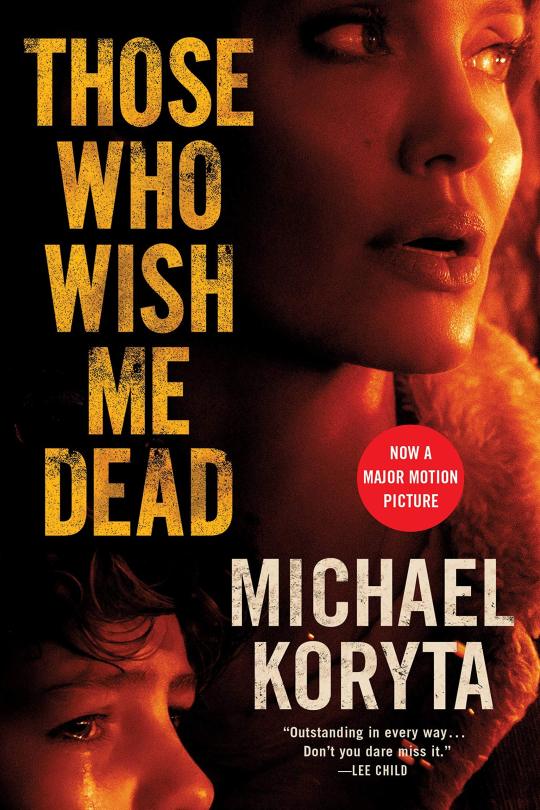
Taylor Sheridan is fast becoming a screenwriter/filmmaker that I look out for, so when I heard that he directed a new movie titled Those Who Wish Me Dead, I knew it was something worth my time. While I’m not sure it’s a movie that’s worth driving over the bridge to go watch, it interested me enough to want to first check out the novel on which it is based.
Michael Koryta’s Those Who Wish Me Dead follows Jace, a teenager who witnesses a murder and is sent to the mountains of Montana for protection under an assumed alias. Hot on his trail are the Blackwell brothers, two ruthless and psychopathic hitmen who have no issues with executing anyone in their path, including law enforcement. When the brothers get too close, Jace finds refuge in Hannah Faber, a smokejumper tasked with keeping watch for forest fires. The unlikely pair head off into the wilderness in an effort to escape both the assassins and the fire now raging in their path.
Those Who Wish Me Dead was a perfect page-turner. The characters were all compelling and the twists were believable and engaging. Having a force of nature like a forest fire lingering in the background raised the stakes and made every decision count. The Blackwell brothers had a way of speaking to each other that at first I thought sounded silly, with them speaking about the people around them as if they weren’t there. Once I realized that they spoke that way because the people they were about to kill meant so little to them, like they weren’t worth existing, it made their conversations more menacing. While the recent movie version of Those Who Wish Me Dead is getting mixed reviews (unfortunately for Taylor Sheridan, whose last three movies have been exceptional) the story is enough to keep me interested in seeing it eventually, and anyone interested in a tightly-paced thriller will surely enjoy Koryta’s book.
1 note
·
View note
Text
I READ A BOOK: “The Dutch House” by Ann Patchett
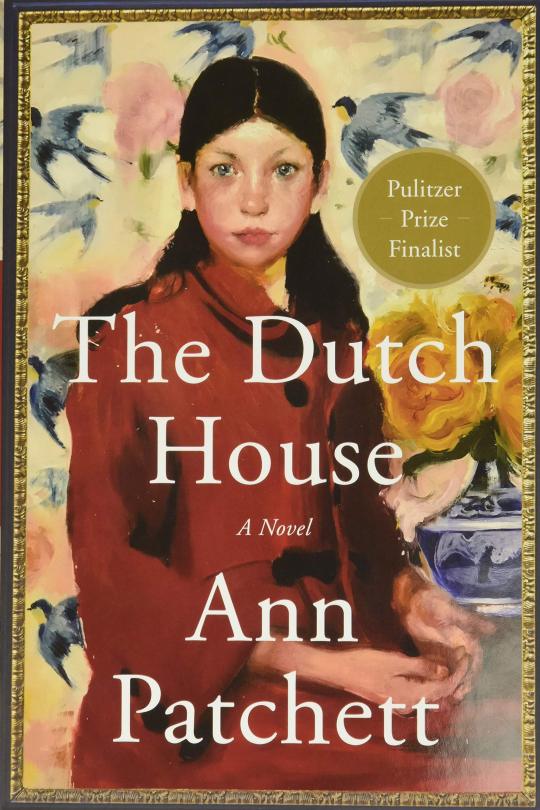
I have had Ann Patchett’s latest novel The Dutch House on my radar from some time, but it wasn’t until recently - when it was announced that it was the assigned reading for a book club I’d like to start attending - that I decided to give it a go. The novel, a recent finalist for the Pulitzer Prize for Fiction, seemed right up my alley, with its sprawling narrative and intricate family drama.
The Dutch House tells the story of the Conroy family, as told from the perspective of son Danny. Danny’s father bought the Dutch House, a large mansion outside of Philadelphia, on a whim, causing his wife Elma to abandon the family, which also includes Danny’s sister Maeve. Danny’s father eventually remarries a woman named Audrey, who, upon Mr. Conroy’s death, proceeds to kick the two Conroy children out of their family home. The shock brings Danny and Maeve closer, the two finding solace in each other’s company and support. Patchett’s novel follows the Conroys through five decades, including Danny’s years in medical school and his marriage to Celeste, a lovely woman who nonetheless finds his attachment to Maeve odd.
I don’t want to give too much away about The Dutch House, given that I hope to discuss it further at the aforementioned book group. However, I will say that despite everything in The Dutch House being technically very interesting, I never felt myself hooked in by Patchett’s words. The stakes were very minimal and Patchett’s prose, though beautiful, was sometimes overwritten. She also introduced a multitude of characters, most of them female, and it was occasionally difficult to follow the narrative because of this. I found The Dutch House family saga thought-provoking, but I wish the story as a whole could have been pared down by a decade or two.
0 notes
Text
I READ A BOOK: “What Comes After” by Joanne Tompkins

Those close to me may already know this, but for those of you who don’t, I’ve very recently started going back to church. I started going with a friend, but then I volunteered my time to help teach children’s service (something I did way back in high school), as it just felt like the natural thing to do. Seemingly as naturally, Joanne Tompkins’s new novel What Comes After - a story about loss, faith, and connection- fell into my lap.
What Comes After follows an unlikely pair. Isaac is a grieving father, his only son Daniel having been murdered by his classmate and best friend Jonah. Recently divorced, Isaac is left alone with his thoughts, his struggles with his Quaker faith, and his elderly dog Rufus. Evangeline is a pregnant teenaged runaway, left with nowhere to go but carrying a suspicious connection to both Daniel and Jonah. When Isaac discovers Evangeline seeking refuge in his backyard, Isaac takes her in, believing God sent her to him to give him a purpose in his time of need. The two share an unlikely, if not unorthodox bond, filling the holes left in each others’ lives as they stumble through grief, confusion, and a desire for purpose.
What Comes After was melancholy but also breathtaking. Tompkins’s characters were rich with detail, making their actions and their pain feel palpable and lived in. Isaac’s relationship with Evangeline - as well as his relationship with Jonah’s mother Lorrie, also dealing with her own anger and grief - feels strangely natural, despite the circumstances. The book also had a lot to say about faith and with one’s relationship with God, which I found very thought-provoking and timely. Although quite bleak, What Comes After was a novel full of hope and understanding, one that kept me thinking long after I’d turned the final page.
1 note
·
View note
Text
I READ A BOOK: “Last Call” by Elon Green

In the early nineties, a serial killer preyed on gay men who frequented New York City bars. The victims were brutally killed, sometimes dismembered, with their bodies left discarded in dumpsters and rest stops. However, because their deaths occurred at the height of the AIDS crisis and rise in hate crimes against gay people, their deaths went basically unnoticed. Elon Green’s new book Last Call dives deep into these forgotten crimes with extensive interviews and investigations.
Last Call is written like a mystery, with the reader getting to know the victims and their backstories intimately before delving into their untimely deaths. Most of the victims were closeted, some still married to women, when they were attacked by the Last Call Killer, their bodies stuffed in garbage bags and left for some poor maintenance worker to discover. The killer, Richard Rogers, was a regular at the Townhouse Bar, a popular piano bar where he supposedly picked out his victims. He was eventually captured in 2001, his arrest overshadowed by the events of 9/11 and his victims nearly forgotten with the passage of time.
Green’s Last Call is both a true crime book and an exploration into the gay scene of the early 1990s. He does extensive research into how the general public, from the media to the police, treated crimes against gay people. He writes of the victims with great respect, having spoken with many close friends and family members to get a full picture of each individual. Since the Last Call Killer was eventually caught, Green’s book is written not to solve a mystery, but to make sure that those lost are not forgotten.
0 notes
Text
I READ A BOOK: “The Four Winds” by Kristin Hannah

A couple of years ago, I was completely engrossed by Kristin Hannah’s novel The Great Alone. Telling the story of a young girl moving to Alaska with her parents - including her father, a Vietnam vet suffering from PTSD - the novel was both beautiful and thrilling, capturing the magnificence of the Alaskan wilderness while also telling a story of survival. When I heard word of Hannah’s next novel, The Four Winds, I jumped at the chance to read it, not even caring what it would be about.
The Four Winds goes back even further in time than The Great Alone: the Dust Bowl during 1930s America. Elsa is in her mid-twenties, gangly, awkward, and still living with her parents when she is knocked up by a young Italian immigrant. Her upper-class parents, ashamed of their daughter’s behavior and prejudiced towards immigrants, kick her out of the house and force her into marriage. Years later, Elsa has found some strength in raising her two children, Loreda and Anthony, and has also gained the respect of her in-laws. When her husband skips town, despondent with life’s missed opportunities and with the drought plaguing his family’s land, Elsa packs up her children and moves them to California to find work. There, the family is met with discrimination against migrants, unfair work environments, and surprising support from Communists and union organizers.
If any of that paragraph sounds overwhelming, it is for good reason: Hannah’s The Four Winds feels at time like a sprawling epic, a modern sibling to The Grapes of Wrath. Everything in Elsa’s life starts bad and gets worse, so it is a marvel that she is able to stay sane for her children. Headstrong Loreda, blaming Elsa for her father leaving the family, becomes attracted to the union cause, finding their predicament unfair and insane to accept. At its heart, The Four Winds is a story about family, about the sacrifices Elsa has made in her life to care for her children and about the determination the three adopt as they face their collective hardships. At over four hundred pages, The Four Winds seemed at first like a daunting task, but Hannah’s prose is well-paced and full of stakes, which makes for a compelling and irresistible read.
0 notes